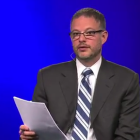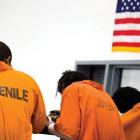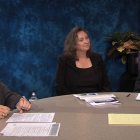
After years of focusing on the safety of children, the nation's juvenile courts are shifting to a more holistic approach that takes into account the emotional, social and academic well-being of at-risk youth. That effort, which has been underway for at least a year, will be showcased Thursday during a webcast moderated by David Kelly, head of the federal Department of Health and Human Services child protection programs.
The crux of the webcast, which starts at 2 p.m. EDT, is to explore how the courts, which are so used to patrolling a child's safety, can attend to the mental, social and physical "well-being" of a child. More precisely, the effort will vet 14 specific measurements that were developed by a committee last summer to ensure the courts are meeting every need of a child - not simply plucking them from dangerous homes or removing risky parents from their lives. About 400 people, many of them judges, attorneys and court administrators, are expected to tune into the webcast. Also participating will be Gene Flango and Nora Sydow of the National Resource Center and National Center for State Courts; Evan Klain, who is director of child welfare for the ABA's Center on Children and the Law; Associate Judge Robert Hofmann of Mason County, Texas; and Sandra Moore, head of Pennsylvania's state office of Children and Families in the Court.








